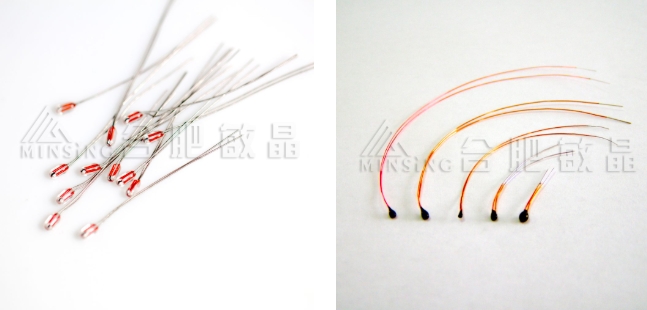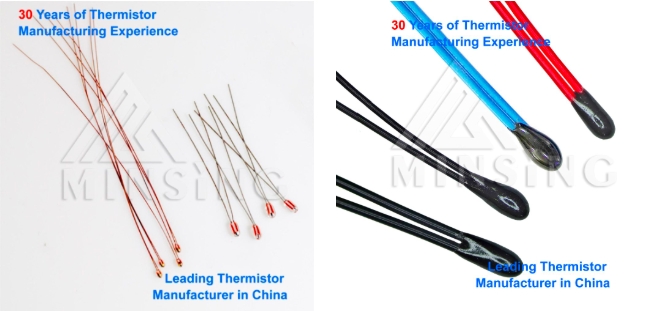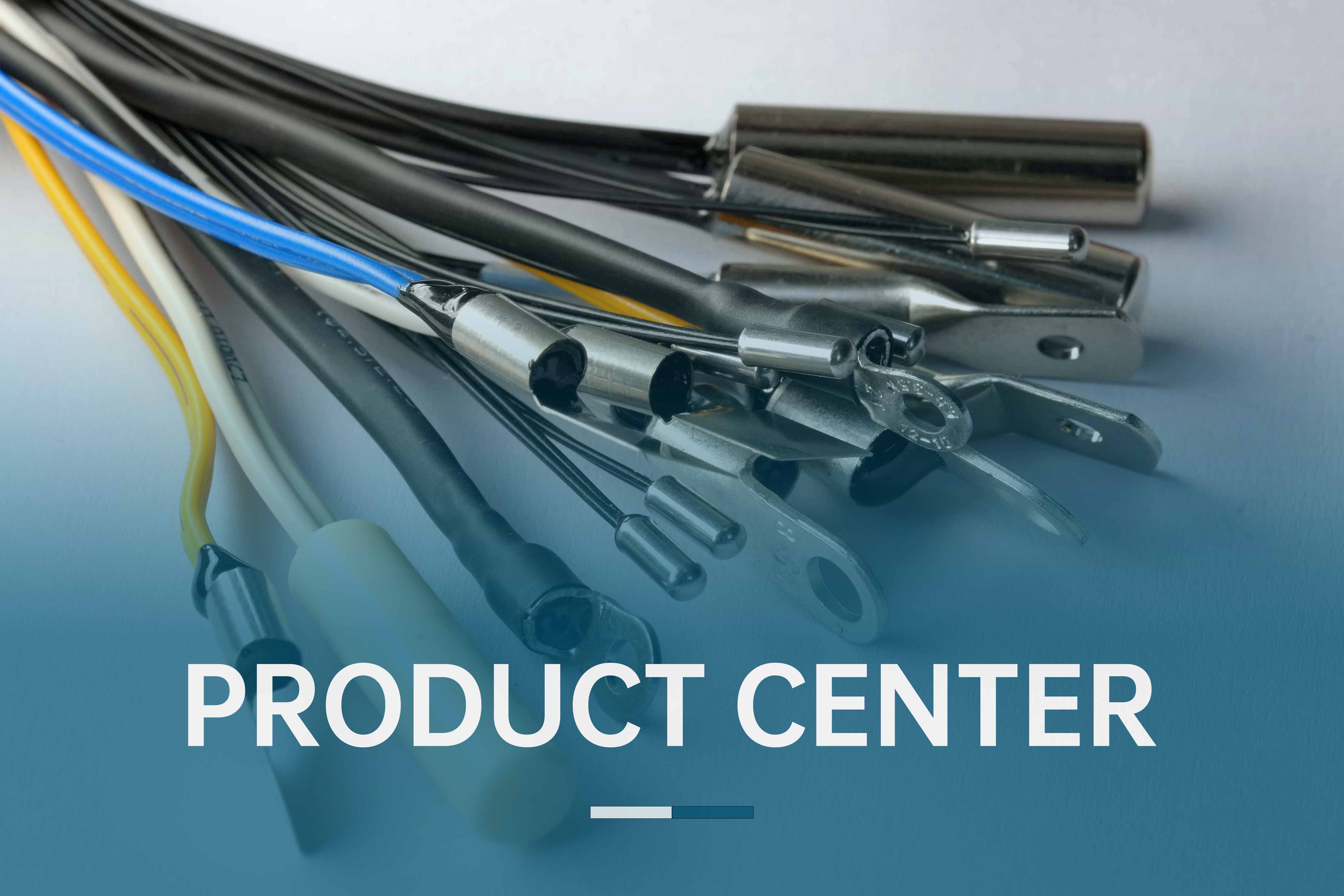Single-ended glass encapsulated thermistors and epoxy resin encapsulated thermistors are both negative temperature coefficient (NTC) thermistors, meaning their resistance decreases as the temperature increases. Both are used for temperature monitoring and control.
Glass Encapsulated Thermistor: The production process is significantly more complex than that of epoxy encapsulation. The thermistor core is connected using Dumet wire (non-insulated), then enclosed in a glass shell. The sizes of the glass shell can vary, with options such as 0.8mm, 1.3mm, and 2.3mm, and the entire unit is finished through high-temperature sintering.
1. Differences in Packaging Process:
Epoxy Resin Encapsulated Thermistor: This thermistor is produced by connecting the thermistor core to insulated wire (such as PVC or Teflon), then covering the assembly with epoxy resin. The smallest head size can be as little as 2.0mm. Compared to glass encapsulation, the process is simpler and more suited for large-scale production.

Glass Encapsulated Thermistor:
2. Advantages and Disadvantages:
Advantages: High-temperature resistance (up to 250°C) and fast response times due to the small size of the glass shell.
Disadvantages: The wire used (Dumet) is non-insulated, so additional insulation such as Teflon tubing is required to achieve insulation.
Epoxy Resin Encapsulated Thermistor:
Advantages: The manufacturing process is simpler, and insulated wire is used, making insulation easier.
Disadvantages: Slower response time compared to glass encapsulation and lower temperature resistance. PVC wires can only withstand 105-125°C, while Teflon wires can handle 150-180°C.

Glass Encapsulated Thermistor:
3. Application Areas:
Temperature control and monitoring in household appliances such as induction cookers, rice cookers, ovens, sterilizers, water dispensers, microwaves, and heaters.
Temperature detection and compensation in office equipment (e.g., copiers, printers).
Used in 3D printers or high-temperature and high-humidity environments.
Industrial equipment, furnaces, and heat pumps.
Epoxy Resin Encapsulated Thermistor:
Battery components, battery modules, and BMS battery systems in new energy vehicles.
Air temperature monitoring.
Chargers, power banks.
Photovoltaic modules.
Small home appliances with lower operating temperatures, such as kettles and heated massagers.
If you are looking for the right thermistor, please contact Hefei Minsing. We are a factory that has been dedicated to researching and producing NTC thermistors and temperature sensors since 1994. We can customize thermistors and temperature sensors with suitable parameters according to your needs and application scenarios.

Differences Between Glass Encapsulated Thermistors and Epoxy Encapsulated Thermistors
- Related recommendations: We offer outstanding Thermistor
- keyword: 【Thermistors】
-
full name*
-
phone
-
email*
-
Company Name (optional)
If you have any other information or questions you would like to know, please feel free to leave us a message (optional)
catalogue














